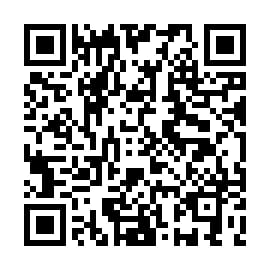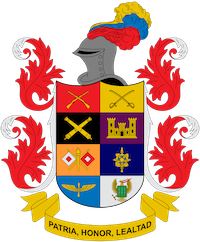Terrorism in the information age
Abstract
This article is the final result of the research project "Transformations of terrorism in the information age", developed in the context of the Observatory of Geopolitics and International Security of the School of International Relations of the Military Cadet School "General José María Córdova". This project emerged from the concern derived from the use of information and communication technologies by terrorist organizations, which have evolved to adapt to the information age from which their activities represent a greater threat to States and international security. In turn, the new technologies have also modified the functioning and structure of terrorist groups, which have adopted the more decentralized and flexible network model.
From this perspective, the reader will find in this article a synthesis of the information age as a historical process that has transformed all human activities, including war and terrorism, which leads to the analysis of cyberterrorism as a new threat to international security that operates in a decentralized, flexible and complex manner under the model of network warfare described by John Arquilla and David Ronfeldt. From there, the reader will learn about the different tactics and actions developed by cyberterrorists on the Internet, which go beyond the theft of national security information and the attack on critical infrastructure, to include ideological propaganda, recruitment and coordination of terrorist acts in the real world.
Downloads
References
Andress, J. y Winterfeld, S. (2011). Cyber Warfare: Techniques, Tactics and Tools for Security Practitioners. Washington: Waltham Syng Press.
Arquilla, J. y Ronfeldt, D. (1996). The Advent of Netwar. California: RAND Corp.
Arquilla, J. y Zanini, D. (2001). Redes, guerra en red y era de la información. Madrid: Alianza Editorial.
Arquilla, J. y Zanini, D. (2001). Networks and Netwars. California: RAND Corp.
Arquilla, J. y Zanini, D. (1997). Cyber War is Coming. California: RAND Corp.
Arquilla, J. y Zanini, D. (2001b). Guerra en red y era de la información. California: RAND Corp.
Bermúdez, L. (2011). Ciberterrorismo: el lado oscuro de la red. Revista Academia Libre. Año 8, No. 9. Recuperado de: http://www.unilibrebaq.edu.co/unilibrebaq-test/revistas2/index.php/academialibre/article/download/263/236.
Brenner, S. (1999). Cyberthreats: The emerging Fault Lines of the Nation State. New York: Oxford University Press.
Botta, J. (2005). El uso de internet por parte de los grupos terroristas yihadistas. Documento de Análisis No. 4, Centro Argentino de Estudios Internacionales. Recuperado de: http://www.caei.com.ar/sites/default/files/04.pdf.
Cano, J. (2008). Ciberseguridad y ciberdefensa: dos tendencias emergentes en un contexto global. Revista Sistemas. No. 119.Recuperado de: https://www.acis.org.co/fileadmin/Revista_119/Editorial.pdf.
Cano, M. (2009). Reflexiones en torno al viejo y al nuevo terrorismo. Revista Española de Investigación Criminológica. Artículo 7, No. 7. Recuperado de: http://www.criminologia.net/pdf/reic/ano7-2009/a72009art7.pdf.
Castells, M. (2001). La galaxia internet: reflexiones sobre internet, empresa y sociedad. Madrid: Plaza y Janes Editores.
Castells, M. (1999). La era de la información: economía, sociedad y cultura.Vol. 1. Ciudad de México: Sigloxxi Editores.
Collin, B. (1997).The Future of CyberTerrorism: Where the Physical and Virtual Worlds Converge. 11th Annual International Symposium on Criminal Justice Issues. California: Institute for Security and Intelligence.
Denning, D. (2001). Activism, Hacktivism, and Cyberterrorism: the Internet as a tool for influencing foreign policy. California: RAND Corp. Recuperado de: http://www.rand.org/content/dam/rand/pubs/monograph_reports/MR1382/MR1382.ch8.pdf.
Díaz, J. (2010). La ciberseguridad en el ámbito militar. En Ciberseguridad, retos y amenazas a la seguridad nacional en el ciberespacio. Cuadernos de Estrategia. No. 149. Instituto Español de Estudios Estratégicos. Recuperado de: http://bibliotecavirtualdefensa.es/BVMDefensa/i18n/catalogo_imagenes/grupo.cmd?path=17029.
Escuela de las Américas. (1989). Manual de terrorismo y guerrilla urbana. Instituto del Cusseta, GA, Estados Unidos: Hemisferio Occidental para la Cooperación en Seguridad. Recuperado de: http://derechos.org/nizkor/la/libros/soaGU/index.html.
Garzón, R. (2013). Ciberguerra, temor, incertidumbre y duda. Information Security and Risk Managment Conference, Sesión 133. Recuperado de: http://www.isaca.org/Education/Conferences/Documents/Latin-CACS-2013-Presentations/133.pdf.
González, I. (2002). Ciberterrorismo: una aproximación a su tipificación como conducta delictiva. Revista Pensamiento Penal No. 22. Recuperado de: http://www.dialnet.unirioja.es/descarga/articulo/3311844.
Guardia Civil de España. (2008). El uso de internet por organizaciones terroristas. Madrid, España. Recuperado de: http://scm.oas.org/pdfs/2008/CICTE00341T.pdf.
Hernangómez, J. (2014). Dilemas cibernéticos y la estrategia de seguridad nacional. Documentos de Opinión. No. 6. Madrid, España: Instituto Español de Estudios Estratégicos. Recuperado de: http://www.ieee.es/Galerias/fichero/docs_opinion/2014/DIEEEO06-2014_DilemasCiberneticos_JL.Hernangomez.pdf.
Laqueur, W. (1999). The New Terrorism. New York: Oxford University Press.
Laqueur, W. (1997). Una historia del terrorismo. Madrid, España: Paidós Ibérica.
Lewis, J. (2002). Assessing the Risks of Cyberterrorism, Cyber War and Other Cyber Threats. Washington: Center for Strategic and International Studies. Recuperado de: http://csis.org/publication/assessing-risks-cyber-terrorism-cyber-war-and-other-cyber-threats.
Lejaraza, E. (2014). Ciberguerra, los escenarios de confrontación. Documento de Opinión. No. 18. Madrid, España: Instituto Español de Estudios Estratégicos. Recuperado de: http://www.ieee.es/Galerias/fichero/docs_opinion/2014/DIEEEO18-2014_Ciberguerra_EscenariosConfrontacion_EguskineLejarza.pdf.
Masana, S. (2002). Ciberterrorismo: ¿una amenaza para la paz mundial? San José, Costa Rica: Facultad Latinoamericana de Ciencias Sociales. Recuperado de: http://www.argentina-rree.com/documentos/ciberterrorismo.pdf.
Mercado, A. y Olvera, G. (2009). La crisis del orden mundial: globalización y terrorismo. Revista Relaciones Internacionales, Estrategia y Seguridad. Vol. 4, No. 1. Recuperado de: http://www.umng.edu.co/documents/63968/76559/8--Dr.AsaelMercadoyotros.pdf.
Merlos, A. (2006). Internet como instrumento para la yihad. Araucaria. Revista Iberoamericana de Filosofía, Política y Humanidades. No. 16. Sevilla, España. Recuperado de: http://www.dialnet.unirioja.es/descarga/articulo/2098457.
Pizarro, E. (23 de diciembre, 2002). Viejo y nuevo terrorismo. Revista Semana. Recuperado de: http://www.semana.com/mundo/articulo/viejo-nuevo-terrorismo/55660-3.
Sánchez, G. (2010). Internet: una herramienta para las guerras del siglo xxi. Military Review en Español, Julio-agosto. Fort Leavenworth, KS. Recuperado de: http://usacac.army.mil/CAC2/MilitaryReview/Archives/Spanish/MilitaryReview_20100831_art006SPA.pdf.
Sánchez, G. (2010b). La nueva estrategia comunicativa de los grupos terroristas. Revista Enfoques, Ciencia Política y Administración Pública. Vol. VIII, No. 12. Recuperado de: http://www.ucentral.cl/prontus_ucentral2012/site/artic/20131231/asocfile/20131231215635/20101210.pdf.
Torres, M. (2011). Los dilemas estratégicos frente a la ciberguerra. Revista del Ejército español. No. 839. Recuperado de: http://www.upo.es/personal/mrtorsor/Publicaciones.html.
Torres, M. (2009). Terrorismo yihadista y nuevos usos de internet: la distribución de propaganda. ARI No. 110. Madrid, España: Real Instituto Elcano. Recuperado de: http://www.realinstitutoelcano.org/wps/portal/rielcano/contenido?WCM_GLOBAL_CONTEXT=/elcano/elcano_es/zonas_es/terrorismo+internacional/ari110-2009.
United Nations Office on Drugs and Crime (UNODC) (2013). El uso de internet con fines terroristas. Organización de Naciones Unidas. Recuperado de: http://www.unodc.org/documents/terrorism/Publications/Use_of_Internet_for_Terrorist_Purposes/Use_of_Internet_Ebook_SPANISH_for_web.pdf.
Virginia, M. (2002). El espíritu del terrorismo. París: Galilée.













